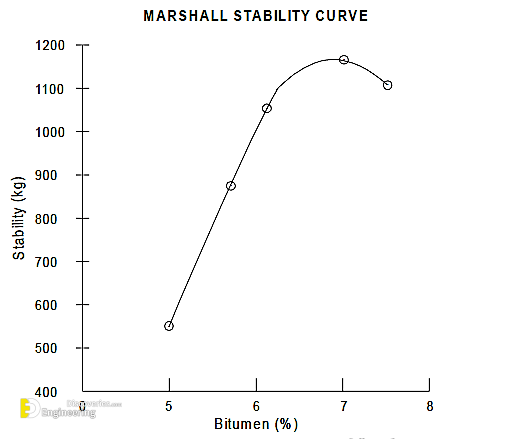Aim
To determine the Marshall stability of bituminous mixture as per ASTM D 1559.
Principle
Marshall stability is the resistance to plastic flow of cylindrical specimens of a bituminous mixture loaded on the lateral surface. It is the load-carrying capacity of the mix at 60oC and is measured in kg.
Apparatus
1- Marshall stability apparatus
2- Balance and water bath
Sample
From Marshall stability graph, select proportions of coarse aggregates, fine aggregates and filler in such a way, so as to fulfil the required specification. The total weight of the mix should be 1200g.
Procedure
1- Heat the weighed aggregates and the bitumen separately up to 170oC and 163oC respectively.
2- Mix them thoroughly, transfer the mixed material to the compaction mould arranged on the compaction pedestal.
3- Give 75 blows on the top side of the specimen mix with a standard hammer (45cm, 4.86kg). Reverse the specimen and give 75 blows again. Take the mould with the specimen and cool it for a few minutes.
5- Remove the specimen from the mould by gently pushing. Mark the specimen and cure it at room temperature, overnight.
6- A series of specimens are prepared by a similar method with varying quantities of bitumen content, with an increment of 0.5% (3 specimens) or 1 bitumen content.
7- Before testing the mould, keep the mould in the water bath having a temperature of 60oC for half an hour.
8- Check the stability of the mould on the Marshall stability apparatus.
Results
Plot % of bitumen content on the X-axis and stability in kg on the Y-axis to get maximum Marshall stability of the bitumen mix. A sample plot is given below




